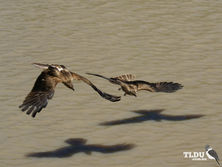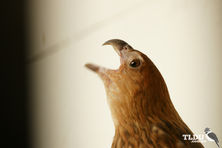
Shoppers Feedback:
Jan 17, 2017
Hello Ros,
I have now paid the invoice, but I would like to write to you just to say a big THANK YOU for getting me the Penguin!
The ChatterMate Penguin became a nice memory for me when I was in New Zealand, and I am so greatful to you for arranging so that I could have it! :-)
Thank you so much!!!!!!!!!!!
Regards,
Malin
Hi Ros,
Many thanks for your very kind email. I really appreciate your prompt reply!
I appreciate your advice regarding the decorations and customs. These are a gift for my daughter’s exchange student family so when she returns home on the weekend I will show her and see if she loves them as much as I do!
Thanks so very much again - I am truly grateful for your kind assistance.
Kind Regards
Bernadette
Ros,
Thanks again for the great customer service. It's a refreshing change!
Best regards,
Trevor
Hey Roz,
Thank you for your emails. Just loved my first order. The cute little Aussie bush critters are going to be used for an office Christmas decoration. My colleagues also liked them and talked about making an order to your site. I'll send you a photo when completed.
I'll be ordering more to send to my daughter's host family in America.
Fabulous service from you.
Kind regards,
Michelle
Thankyou. Order arrived today. One very happy grandson with his new beastly binoculars.
Regards,
Irene
- Home
- Wild Wonders
- Shop
- Aromas of Australia
- Australian Made
- Books
- Book Marks
- Christmas Decoration Sale
- Christmas Decorations
- Clocks
- Drink Holders
- Garden & Outdoor
- Gift Wrapping & Cards
- Home & Giftware
- Jewellery
- Keyrings
- New Products
- Pencils & Pen Holders
- Photo Frames
- Plush Toys
- Plush with Sound
- Sheepskin Rugs
- Stationery
- Stone Carvings
- Toys & Games
- Travel Goods
- Wedding
- Wild Figurines
- Wildlife Safety Products
- Wind Chimes
- Wine Charms
- View All Products
- Wildlife
- Australiana
- Explore
- Contact Us

Quick Facts
| Length: | 55 cm |
| Height: | - |
| Weight: | 770 grams |
| Colour: | Sandy brown wings, light brown head and underparts |
| Habitat: | Woodlands, open country and favours wetlands |
| Food: | Carrion (dead prey), small live mammals, birds, fish and insects |
| Predators: | - |
| Status: | Secure in all states and territories except for Tasmania - not present |
The Whistling Kite is a medium-sized bird of prey (raptor) with a shaggy appearance. It has a light brown head and underparts, with pale streaks, and dark sandy-brown wings with paler undersides. The underwings have a characteristic pale 'M' shape when open.
The head and body are relatively narrow and the tail is rounded. The wings are long and well-rounded, with a wingspan of 120 cm to 145 cm. The sexes are similar, but the females are larger. Young birds are slightly darker above, with paler streaking on the head and underbody. They are often seen near water or around farms, soaring in a lazy circling flight pattern.
Several other birds of prey (raptors) may be confused with the Whistling Kite, including the Little Eagle, other kites and harriers. These can only be separated by factors such as flight silhouette and style and the overall body shape.
The Whistling Kite is widespread over mainland Australia but is uncommon in Tasmania.
The Whistling Kite is found in woodlands, open country and particularly wetlands. It is also common around farmland, vineyards and anywhere where carrion (dead animals) can be found (e.g. abattoirs, rubbish dumps and roadsides).
Partially migratory, but mostly resident in northern and western Australia.
Whistling Kites soar above the ground, trees and water to search for prey such as carrion (dead animals) and small live animals such as mammals, birds, fish and insects.
The Whistling Kite appears to be monogamous, with some breeding pairs remaining in a territory throughout the year and pairs actively defend the area around a nest. The Whistling Kite prefers tall trees for nesting. The bulky nest platform is built of sticks in a tall tree and may be reused, growing larger over time. Both sexes build the nest and incubate the eggs (the female does most of the incubation however) and may breed two or three times a year. The young stay with the parents after fledging for about six to eight weeks.
The Whistling Kite as been favoured by clearing to some extent as it does not enter dense forests, but it still needs remnant tall trees for nesting. Farmlands are useful hunting grounds and provide extra water sources. Road kill provides a good source of food. However, wetland destruction and drainage has affected populations in southern Australia.
Last Updated: Sunday 14th July, 2013
BirdLife Australia - www.birdlife.org.au
BUSH e-TELEGRAPH
Signup for our monthly newsletter the "e-Telegraph"
Quick Links
Home | The Beginning | About The Land Down Under | Wild Wonders | Advertise on Wild Wonders | Christmas Decoration Sale | Christmas Tree Decorations | Drink Holders | Plush with Sound | Stone Carvings | Wildlife Wine Charms | Freebies | Australian Wildlife | Help Our Wildlife | Australiana | Photo of the Month | Explore The Land Down Under | Contact Us | Legal Notices


